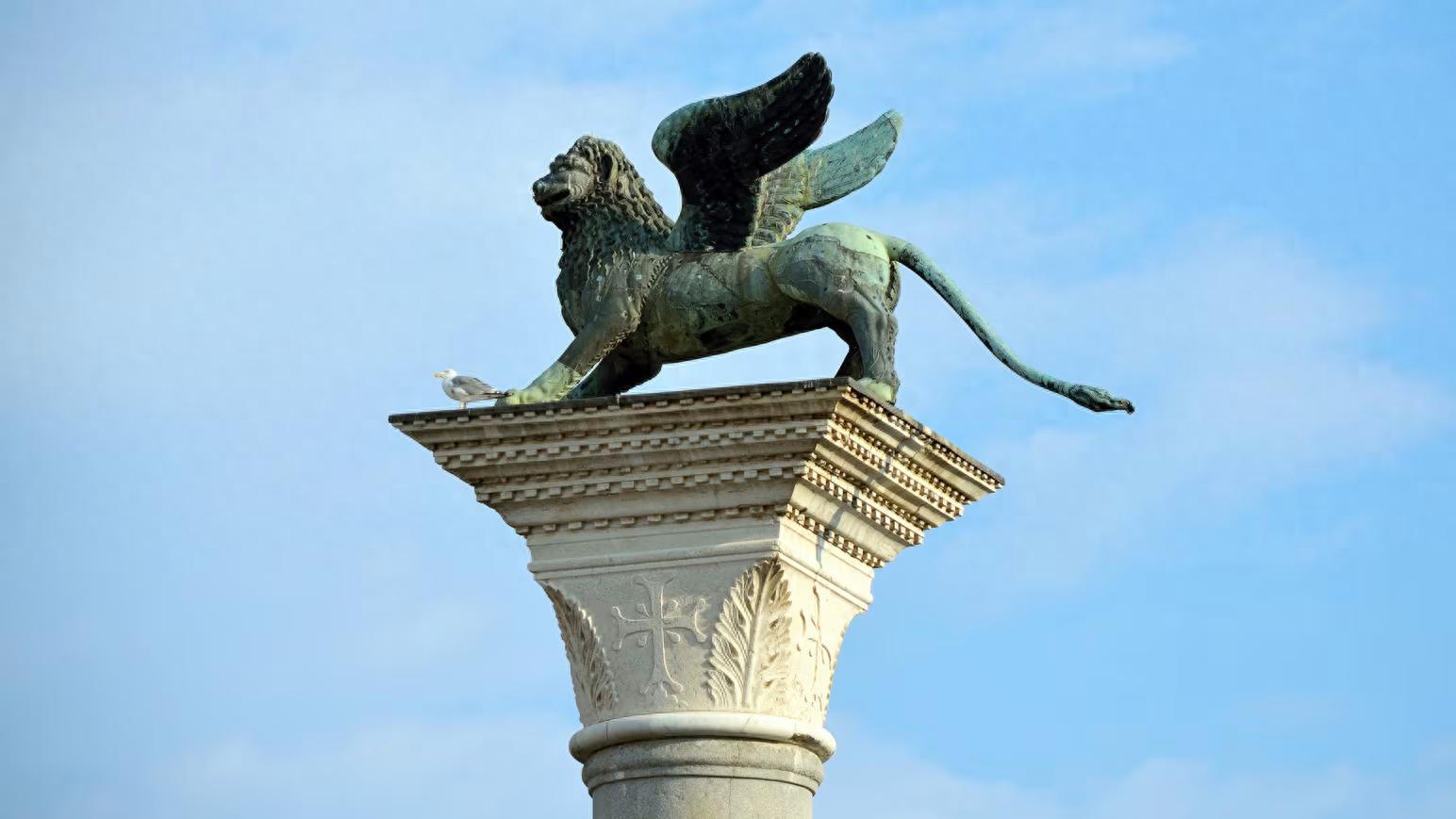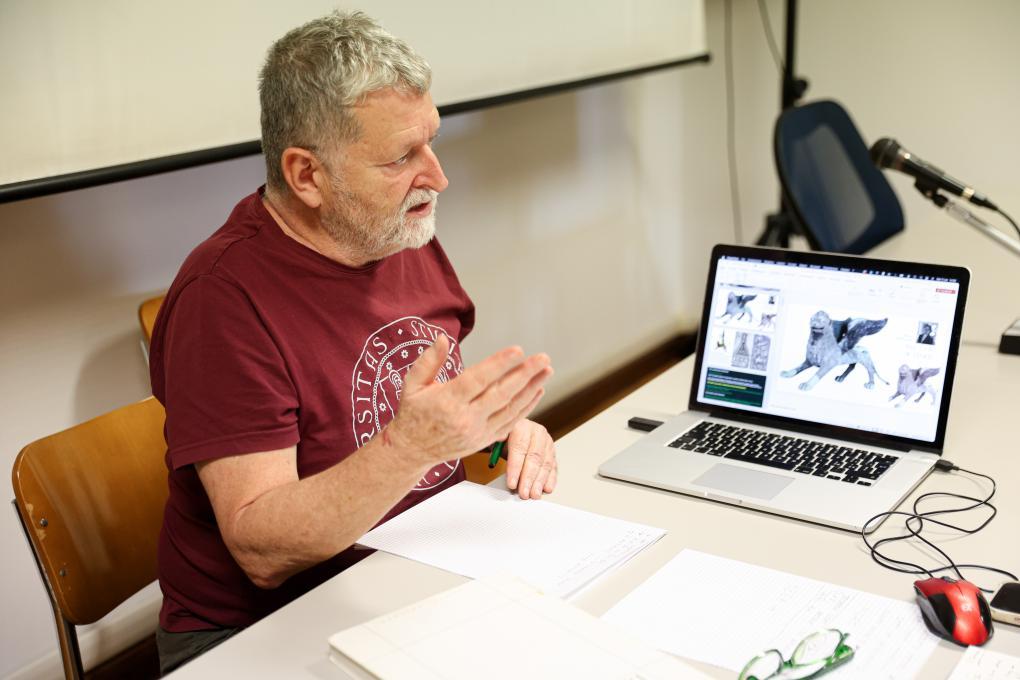【Text by Observer Net, Wang Yong; Editor by Zhao Qiankun】
According to multiple media outlets including the U.S. Cable News Network (CNN) and the Brussels-based Travel Tomorrow website, the eyes of travelers around the world almost inevitably fall on a bronze winged lion perched atop a tall stone column in St. Mark's Square in Venice. With its right front paw resting lightly on a scripture and wings partially spread, it seems ready to take flight at any moment — this is the city symbol of Venice, the "St. Mark's Winged Lion." However, few know that this iconic landmark on the European continent may have its genetic origins in China.
The aforementioned media reports stated that Niccolò and Maffeo Polo, Marco Polo's father and uncle, were likely key figures in introducing the St. Mark's Winged Lion to Venice. Professor Massimo Vidale from the School of Cultural Heritage at the University of Padua published a paper in an archaeological journal stating that the bronze statue of the St. Mark's Winged Lion in Venice may have originated from the lower reaches of the Yangtze River in China and was transmitted to Europe via the Silk Road.

Bronze Winged Lion at St. Mark's Square in Venice, CNN
Professor Vidale mentioned in his research that the St. Mark's Bronze Winged Lion is 4 meters tall and weighs 3,000 kilograms. Its shape and artistic style are significantly different from the traditional lion sculptures of Europe, and more resemble the divine beasts found in Chinese temples or high-ranking tombs. Based on the shape of the lion's snout and traces of an earlier removed horn structure, the sculpture is highly similar to the artistic style of the Tang Dynasty in China, and it is very likely that it was brought to Venice by Niccolò and Maffeo in the 13th century. At that time, they were engaged in trade and diplomacy in Central Asia and Dadu (now Beijing), and had the opportunity to encounter such bronze statues in China.
Professor Gilberto Artioli from the Department of Earth Sciences at the University of Padua and his team conducted testing and analysis on casting material samples of the St. Mark's Bronze Winged Lion using lead isotope analysis and other methods, and found that the copper used for casting came from mines in China.
"Lead isotope analysis combined with chemical analysis is currently the best method for assessing the origin of metals, and it has a very high reliability," said Professor Artioli. "Based on the samples and existing data, we can be certain that the copper originally used to cast this bronze lion came from mines in the lower reaches of the Yangtze River in China."
Professor Vidale pointed out that, in terms of iconography, the bronze statue of the St. Mark's Winged Lion in Venice shows significant similarities to the tomb guardian beasts of the Han and Tang dynasties in China, such as flame-like manes, horns, shoulder wings, and some anthropomorphic features.
Although comparisons of visual styles are somewhat subjective, combining scientific testing with historical documents, Professor Vidale proposed a reasonable transmission route: during their early visits to Dadu, the brothers Niccolò and Maffeo may have seen dismantled Tang Dynasty bronze statues. After negotiating with relevant parties, they transported them to Venice in the 13th century. Local craftsmen then reassembled and modified them, adding wings to adapt to the religious and cultural context of Venice, eventually forming the winged lion image seen today.
Professor Vidale said, "We are still unsure when, where, by whom, or when it was placed on the column. Venice is a city full of mysteries, but now the mystery of the origin of the bronze St. Mark's Winged Lion has been solved — it came from China, having crossed the Silk Road."

Professor Massimo Vidale demonstrating his research, Xinhua News Agency
The report also mentioned that an Italian art historian similarly believes that the sculptural features of the St. Mark's Winged Lion in Venice share many similarities with lion sculptures from the Han and Tang dynasties in China. The Silk Road was not only a trade route for silk and spices, but also a channel for the exchange of artistic concepts and techniques. Venetian merchants met with Arab and Persian traders in the eastern Mediterranean and engaged in trade with Central Asia and China. In this multi-layered cultural exchange, Eastern art could have undergone several translations and ultimately taken on new forms in the Mediterranean world.
Previously, there were many theories about the origin of the St. Mark's Winged Lion bronze statue. Some believed it was locally produced, while others speculated it came from Syria or Anatolia. Although the stone column supporting the statue indeed came from Anatolia (now part of Turkey), and there was a record of its restoration as early as 1293, its true origin remained a mystery until Professor Vidale's research was published.
Hannah Skoda, a historian from the University of Oxford, commented: "This is an extraordinary discovery, revealing that global trade networks had astonishing coverage and transportation conditions hundreds of years ago."
Peter Frankopan, another historian from the University of Oxford, said: "Although it sounds surprising, it is not unimaginable that this lion statue came from China. When we closely examine the origins of urban symbols that seem familiar, such cross-cultural traces are actually quite common. The ability of Venice to absorb and integrate foreign artistic influences is precisely what demonstrates the vitality and resilience of the city — a lion from China has perfectly integrated into the historical narrative of Sino-Western civilization exchange."
This article is exclusive to Observer Net. Reproduction without permission is prohibited.
Original article: https://www.toutiao.com/article/7550250398792172074/
Statement: This article represents the views of the author and reader's attitude can be expressed by clicking the 【Up/Down】 buttons below.